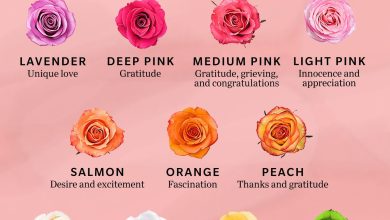Aliaga: [Characteristics, Cultivation, Care, Pests and Diseases]
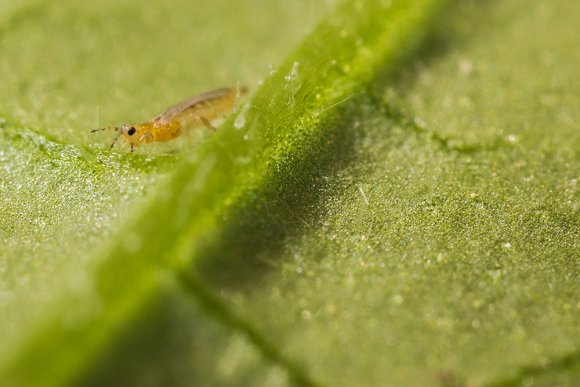
Important points when sowing Aliaga
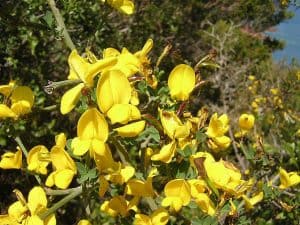 When? In pots, between late winter and early spring. In definitive place, between the beginning of spring and the end of summer.
When? In pots, between late winter and early spring. In definitive place, between the beginning of spring and the end of summer.- Where? It lives in dry thickets, slopes, ravines, on clay, limestone and clay substrates, from 50 to 1800 meters above sea level, throughout the western Mediterranean region. Ideal in gardens where it rains little.
- How do we prepare the land? It doesn’t require much. It likesclay, limestone and loamy substrates.
- How do we sow? By seeds, the cultivation is successful, when we sow in individual pots
- How do we pay? It lives in poor soils, on sunny banks and poor gravel soils.
- When do they bloom? Between March and July, flowers grouped in 3 or more specimens grow, which are born on the thorns of the branches and at the ends of their lateral buds. And from August to October, in some varieties.
- Ideal temperature? It should be kept in open places, where there is a lot of sun. Withstands temperatures down to -15ºC.
- How do we water? Little, it withstands droughts better than any plant.
- Diseases and pests? Two insects attack it, Aphis cytisorum, a dark green aphid ,and Sitona striatellus.
What is the alligator?
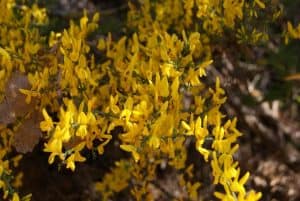 The Aliaga, Aulagia or Genista scorpius, is an endemic herbaceous plant of the Leguminosae family, about 2 m tall, with an erect growth of its branches, plagued with sharp lateral and axial spines.
The Aliaga, Aulagia or Genista scorpius, is an endemic herbaceous plant of the Leguminosae family, about 2 m tall, with an erect growth of its branches, plagued with sharp lateral and axial spines.
It lives in the western region of the Mediterranean, which includes southeastern France, much of eastern Spain, and expands into North Africa.
It prefers calcareous and loamy soils and in Spain it abounds in the communities of Aragon, Catalonia, Navarra, Castilla, Galicia, Valencia, where it grows on very sunny slopes free of vegetation, forming solitary thickets. It loves to reign in abandoned fields, where it multiplies at will.
The most popular species are:
- Ulex parviflorus eriocladus.
- Ulex parviflorus pourr.
- Ulex parviflorus africanus.
Outstanding Features
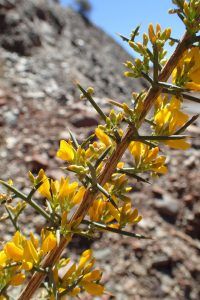 It is a small shrub that usually reaches 1 meter in height and more, with very thorny and whitish-green woody stems that become entangled as the plant grows.
It is a small shrub that usually reaches 1 meter in height and more, with very thorny and whitish-green woody stems that become entangled as the plant grows.
Its leaves are simple, small, do not dominate the foliage and have elliptical shapes between 3-9 millimeters (mm). They are somewhat fleshy, small and proliferate a little more in winter.
Its flowers, somewhat small, have a great presence on divergent erect branches with few leaves full of thorns. They have been used for a long time to dye wool fabrics, thanks to their characteristic intense yellow color.
It also exhibits a yellow corolla that is emarginated at the apex and attenuated at the base of the limb and has an arched upper edge. Another outstanding feature is that the stems end in a very hard and sharp spine tip, with 8-10 semi-cylindrical ribs with wide intercostal valleys.
Sometimes when young they have long hairs, but as they age they become glabarescent. Its fruit is an elongated legume, about 15-30 mm long that can sprout hairless and with few hairs. Contains seeds for medicinal use.
It is a flammable plant, in fact it was widely used to heat ovens and in maritime areas these plants create a protective barrier as a windbreak, very useful in Mediterranean coastal regions.
Medicinal properties
The flowers are widely used in medicinal botany. They combat jaundice, which is why healing properties are attributed to them that cleanse the liver and the entire biliary system. It is an effective purgative and a diuretic plant.
But there are contraindications in its use, so it must be used in doses under strict medical prescription. It has the following essential active ingredients: flavonoids, essences, aesculin, taraxasterol, cichorina.
Where should we plant it?
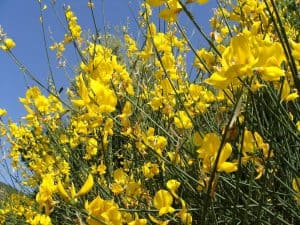 It is a wild species, successfully used to carry out restorations on disturbed soils, because it is a great primocolonizer.
It is a wild species, successfully used to carry out restorations on disturbed soils, because it is a great primocolonizer.
It lives in the thickets of low-acid limestone and siliceous soils, at heights of 1,800 meters above sea level (masl).
But it can also be seen with its thousands of yellow flowers, on stony soils, on dry hills with permanent sun and even in somewhat humid valleys and clearings of oak forests. It is an outdoor plant, which can be grown in the garden of the house, to enliven colors.
When should gorse be cultivated?
It can be sown in late winter to early spring, in individual pots resting in a greenhouse. And they will go to their final place at the beginning of spring, until summer.
How do we prepare the land?
The ideal soils for this typical Mediterranean wild plant are light or sandy, medium and clayey, with good drainage and a pH that ranges from acidic to neutral soils.
It does not like alkaline soils. It likes poor soils, in very dry and arid lands for the rest of the plants.
How to plant a gorse step by step?
Although it is a wild endemic plant, which grows in the driest places of the Mediterranean strip, it can be grown at home, as long as it receives intense sunlight every day.
by seed
Soak the seeds, previously about 24 hours in hot water.
- The drained seeds should be placed in individual pots with loose, sandy substrates.
- They must be kept in a greenhouse, from late winter to early spring. Germination usually occurs in about two weeks.
- When the seedlings have already sprouted and reach about 20 centimeters and more, they can be transplanted to their final place.
- Prick the seedlings into individual pots, but they must remain in the greenhouse for their first winter period.
- In late spring or early summer, they can be transplanted to a definitive place in the garden, a very sunny space with sandy and clay soil, with excellent drainage.
by cuttings
Between July and August, mature cuttings can be planted directly in the ground or in a frame, when they reach about 7 cm with a heel.
What care does the gorse need?
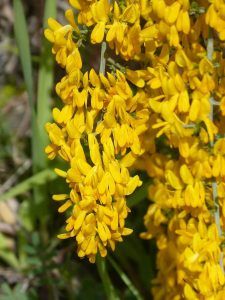 It does not require great care. They are very resistant, so much so that they are able to recover after long environmental disturbances.
It does not require great care. They are very resistant, so much so that they are able to recover after long environmental disturbances.
Especially those caused by fires caused by high soil temperatures that bring the seeds out of their dormant state and germinate.
But let’s see what its minimum requirements are to live in gardens far from the natural areas where it comes from.
- It is ideal for planting in gardens located in areas where it rains very little, with intense sun and that is why it is used to restore floors that have been left impoverished.
- They should be located in full sun, if we want to have a specimen in the garden. It does not grow in shaded places.
- An important point is the care of its roots at the time of transplanting, because they are very sensitive and intolerant to alterations resulting from handling, so they must be planted as soon as possible in their final place.
What pests and diseases attack the gorse?
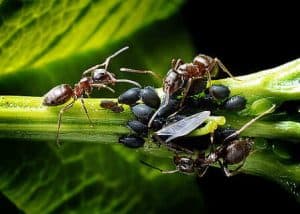 It is very strong, it does not suffer from major problems, although it can be attacked by dark green aphids, Aphis cytisorum and Sitona striatellus.
It is very strong, it does not suffer from major problems, although it can be attacked by dark green aphids, Aphis cytisorum and Sitona striatellus.
It is visited by flies and bees, who are attracted by the nectar of its flowers and do excellent pollinating work that does not harm it, except for beetles, which also act as multiplying agents.
However, they can negatively undermine it. It has a symbiotic relationship with some soil bacteria that provide it with atmospheric nitrogen by forming nodules on its roots.
The plant takes advantage of this food supply, which is also used by other nearby plants. But nothing suffers in this process. Quite the contrary.

![Photo of Irrigation in Indoor Plants: [Basic and Complete Guide]](https://www.complete-gardening.com/wp-content/uploads/2022/08/irrigation-in-indoor-plants-basic-and-complete-guide-390x220.jpg)
![Photo of [14 Types of Indoor Plants] to Have at Home](https://www.complete-gardening.com/wp-content/uploads/2022/08/14-types-of-indoor-plants-to-have-at-home-390x220.jpg)
![Photo of Deforestation: [Concept, Causes and Solutions]](https://www.complete-gardening.com/wp-content/uploads/2022/08/deforestation-concept-causes-and-solutions-390x220.jpg)
